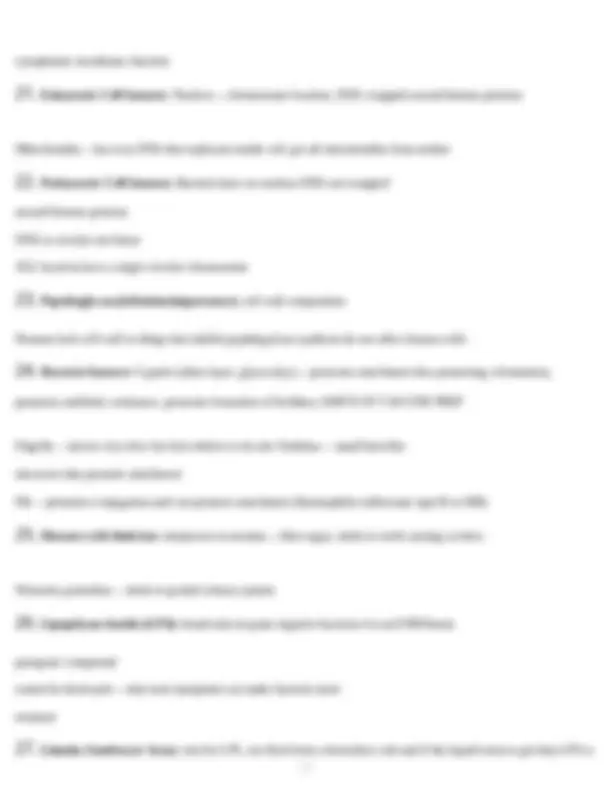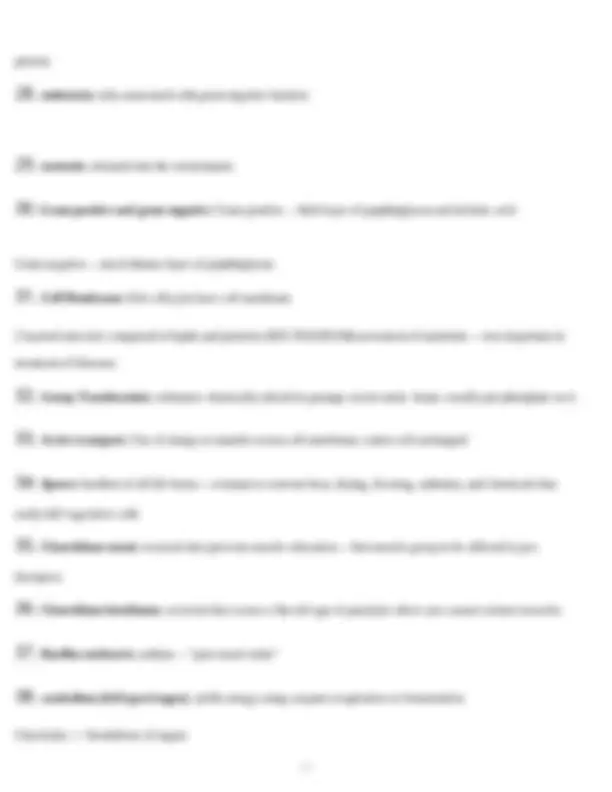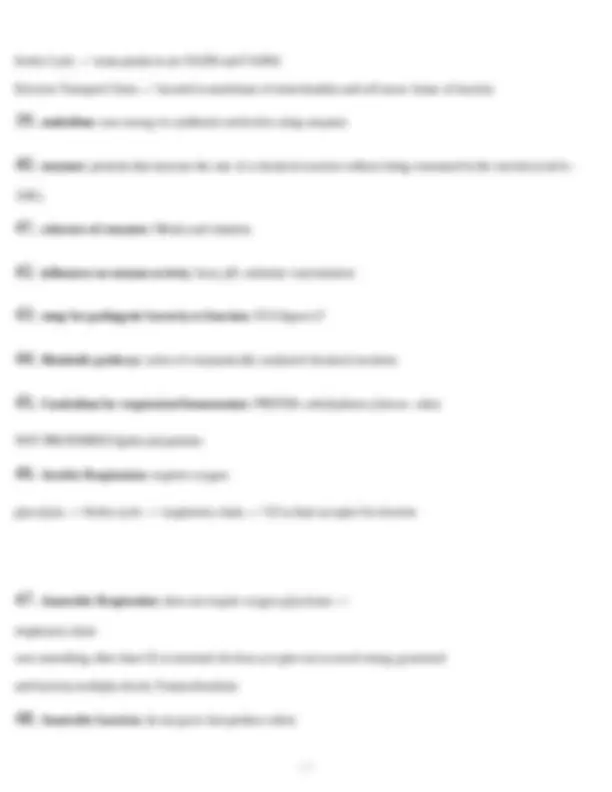





Study with the several resources on Docsity

Earn points by helping other students or get them with a premium plan


Prepare for your exams
Study with the several resources on Docsity

Earn points to download
Earn points by helping other students or get them with a premium plan
Community
Ask the community for help and clear up your study doubts
Discover the best universities in your country according to Docsity users
Free resources
Download our free guides on studying techniques, anxiety management strategies, and thesis advice from Docsity tutors
Microbiology Exam 1 Newsome with Complete Solutions 100%
Typology: Exams
1 / 6

This page cannot be seen from the preview
Don't miss anything!




does not kill spores
active
reducing number of post-surgical wound infections (late 1800s)
microbe even in minute amounts inhibition of: cell wall synthesis protein synthesis DNA synthesis metabolism
present
Gram negative -- much thinner layer of peptidoglycan
2 layered structure composed of lipids and proteins (SEE DIAGRAM) movement of materials -- very important in treatment of diseases
easily kill vegetative cells
(lockjaw)
Glycolysis --> breakdown of sugars
Krebs Cycle --> main products are NADH and FADH Electron Transport Chain --> located in membrane of mitochondria and cell mem- brane of bacteria
NOT PREFERRED lipids and proteins
glycolysis --> Krebs cycle --> respiratory chain --> O2 is final acceptor for electron
respiratory chain uses something other than O2 as terminal electron acceptor not as much energy generated and bacteria multiply slowly Tetanus/botulism